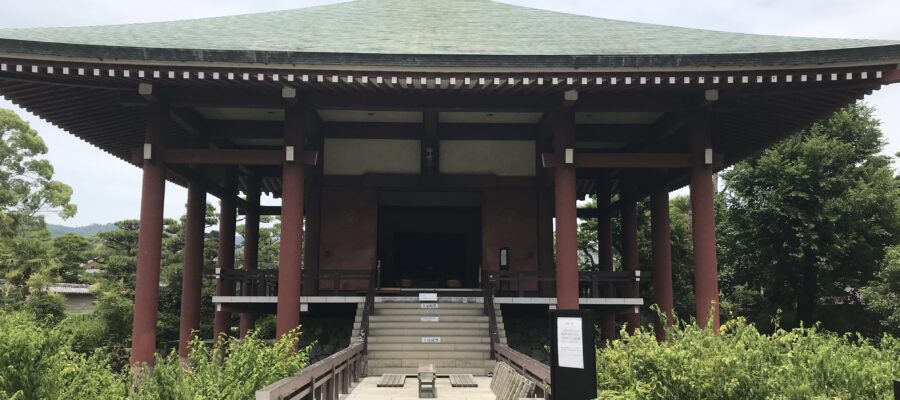めったに来ない法隆寺の東院側
時々、海外から研修生や、日本に留学している大学生を法隆寺に案内することはありますが、だいたい時間がないので五重塔や金堂がある西院のみを見て、バスで別の場所に移動することが多いです。夢殿のある東院すらめったに来ないので、その隣の中宮寺に来ることはありませんでした。
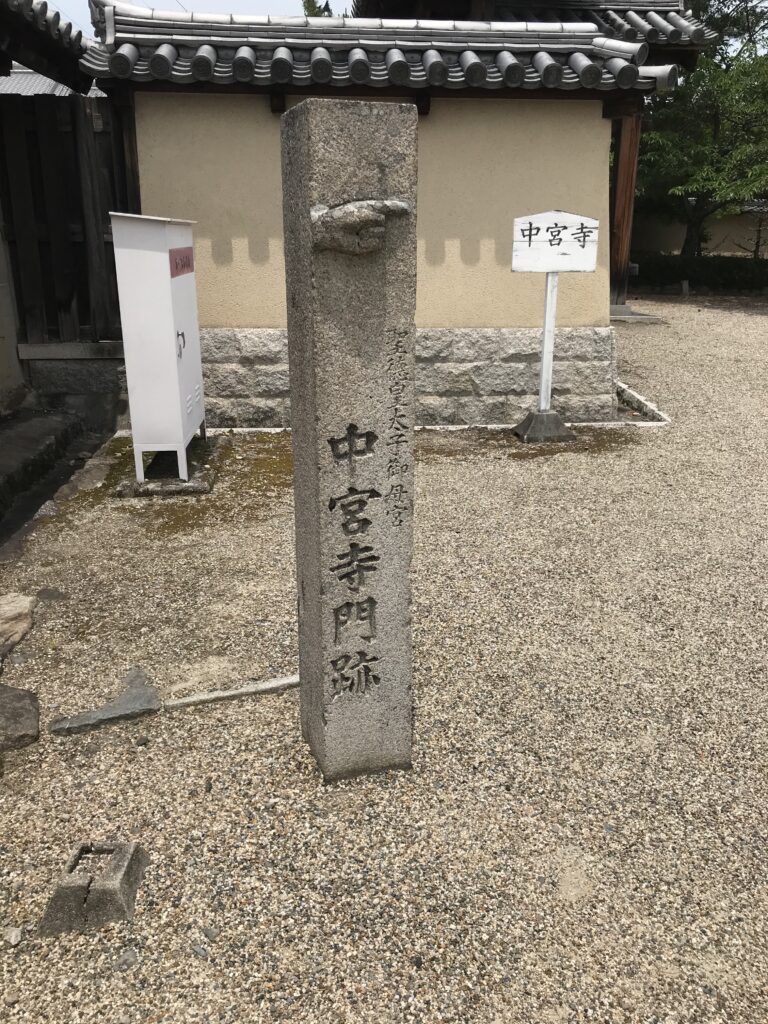
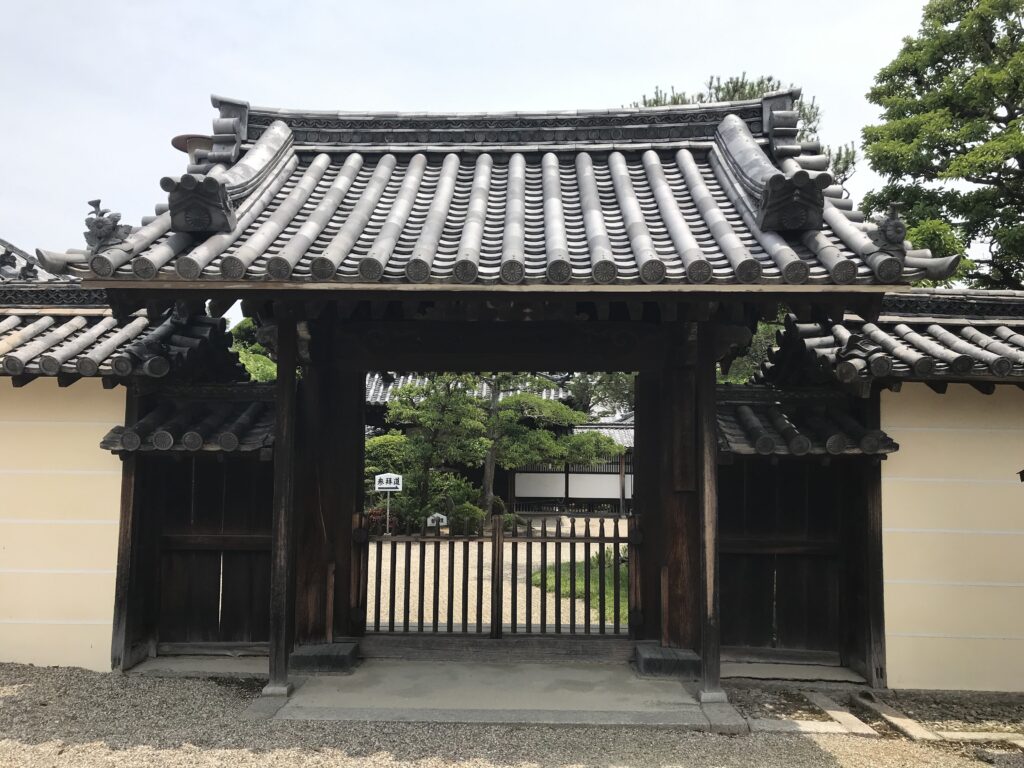
このお寺は、聖徳太子が生母の穴穂部間人皇后のために建立したと伝えられる寺院です。かつては、現在地より500メートルほど東にあって、棟と金堂が南北に並ぶ四天王寺式の大伽藍だったそうです。
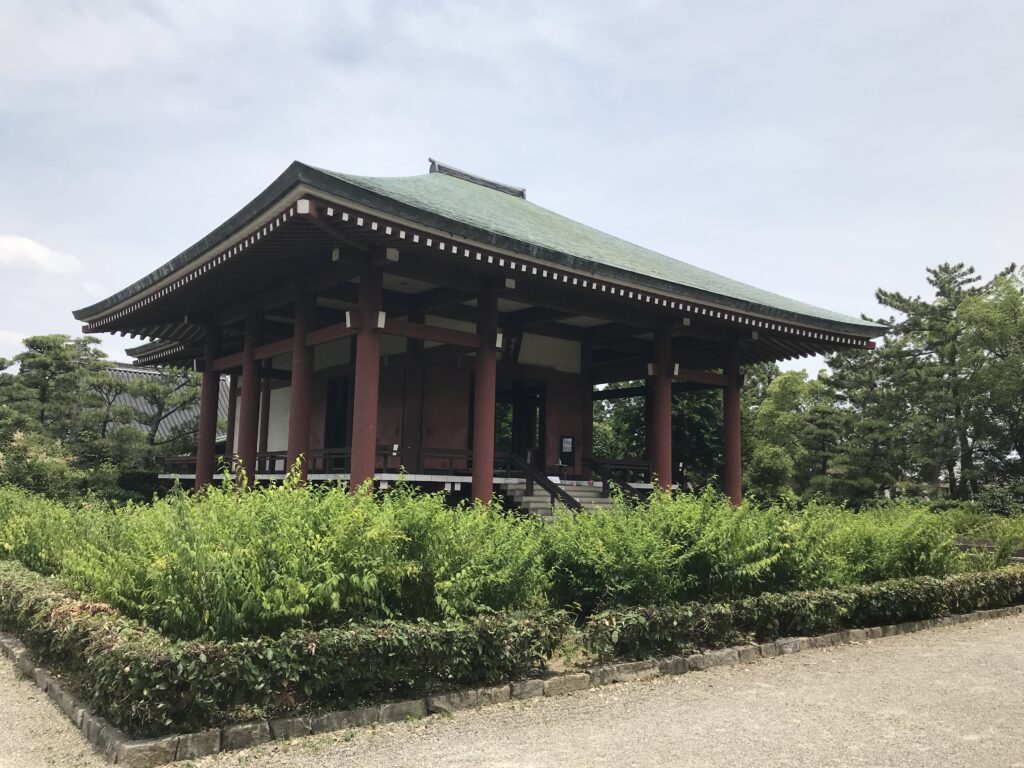
国宝の半跏思惟像
現在の本堂は1968年に落慶したもので、高松宮妃の発願だそうです。この中に、かの有名なアルカイックスマイルの半跏思惟像(国宝)があります。歴史の教科書で必ず習う、右の足を左の膝の上に置き、右手を曲げて、その指先をほのかに頬に触れているあの像です。京都の広隆寺の像と区別するため、頭に2つ玉が載っている像と覚えた方も多いのではないでしょうか。
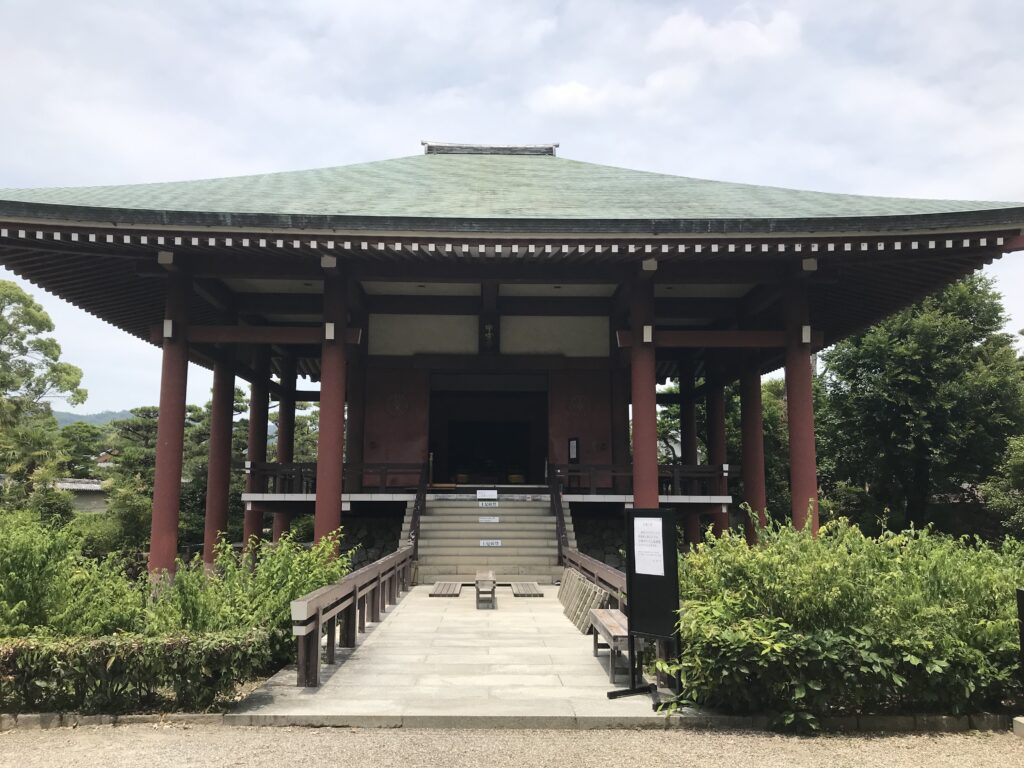
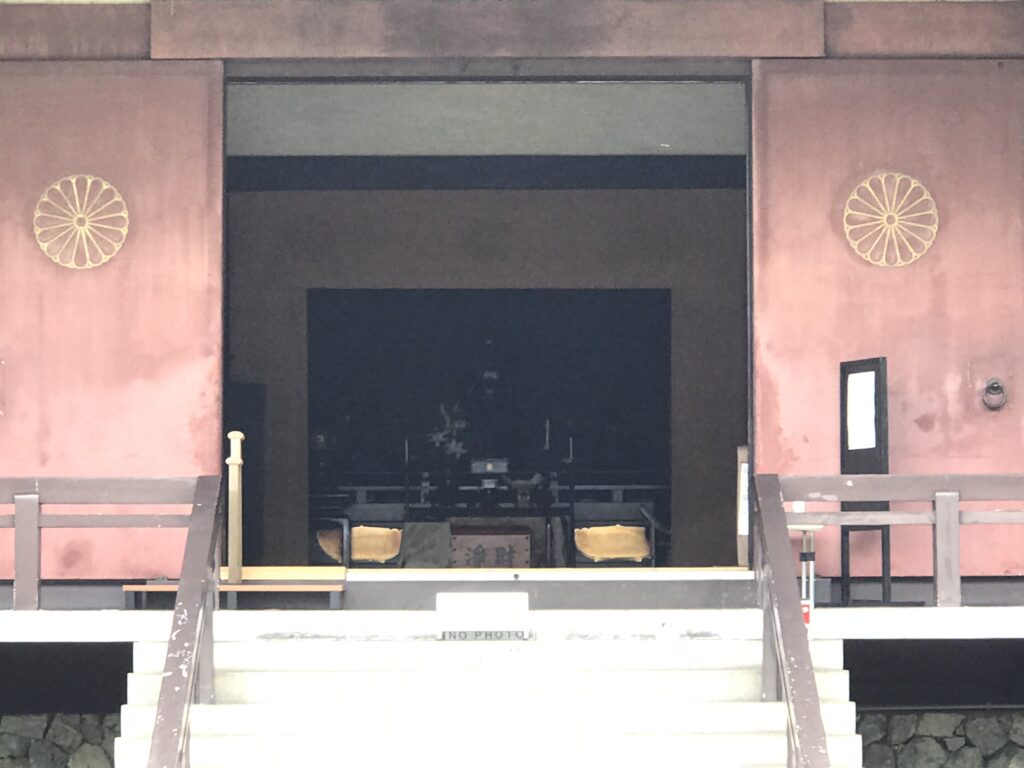
当然、堂内は撮影禁止なので、入口前で撮影しましたが、奥の方にうっすらお姿が見えます。道内では、これまた国宝の「天寿国繍帳」について、解説テープを流していただきました。テープを聞きながらも、目は半跏思惟像を見つめていました。素材は金属と思っていたのですが、楠が正解で、黒漆が塗りこめられています。飛鳥時代も黒光りしていたのかは、わかりませんが、黒色の輝きがこの像の魅力を何倍にも増幅していると感じました。
こちらも国宝
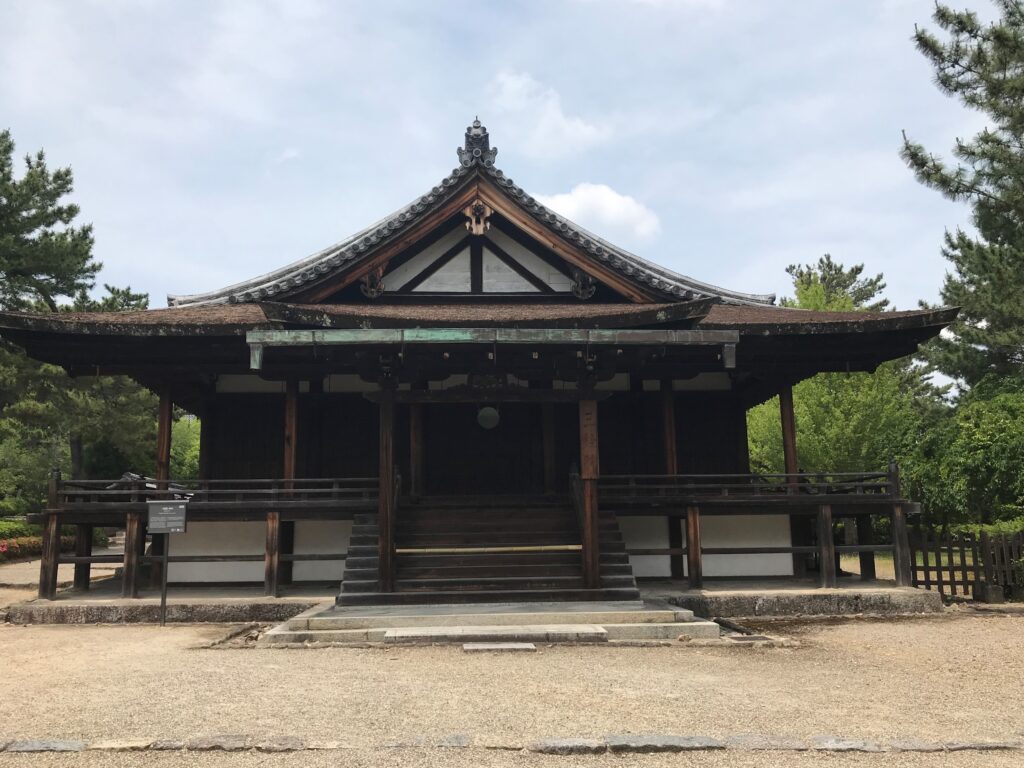
半跏思惟像を長々とお参りした後、帰路につきましたが、素通りした三経院・西室も国宝だったそうです。ただ今日は、長年見たかった半跏思惟像に会えて十分に満足でした。(完)
中宮寺の御朱印
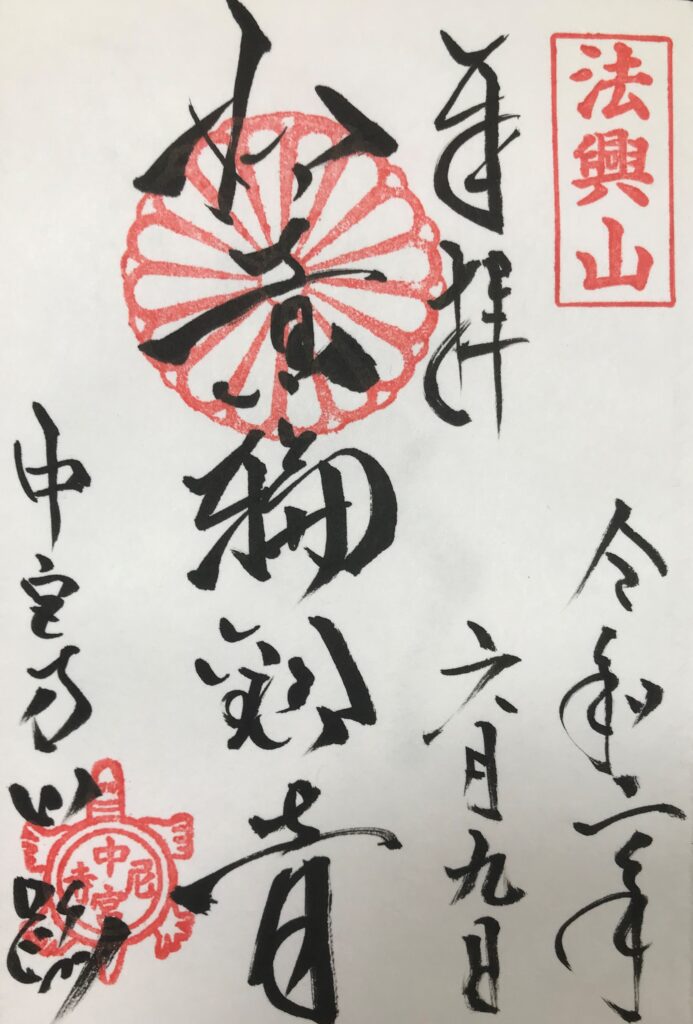
中宮寺が紹介されている書籍御
神仏霊場会の公式ガイドブックに中宮寺が紹介されています。
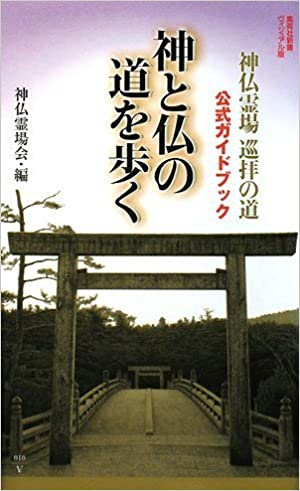
神と仏の道を歩く 神仏霊場巡拝の道公式ガイドブック (集英社新書ヴィジュアル版) [ 神仏霊場会 ]
価格:1,466円
(2021/5/6 09:24時点)
感想(5件)
Chuguji Temple (English)
The rarely visited East Wing side of Horyuji Temple
Sometimes I take trainees from overseas or university students studying in Japan to Horyuji Temple, but they usually have little time to visit the temple, so they only visit the West Wing, where the five-story pagoda and Kondo are located, and take a bus to another place. Even the Toin, where the Dream Hall is located, is rarely visited, so I never came to the neighboring Chuguji Temple.
This temple is said to have been built by Prince Shotoku for his birth mother, Empress Anahobe-no-mahito. It used to be located about 500 meters east of the present location, and was a large temple complex in the Shitennoji style, with the buildings and Kondo lined up north to south.
National Treasure Statue of a Buddha sitting with his head in his hands
The current main hall was completed in 1968, and was the brainchild of Princess Takamatsu. In this hall, there is a statue of a half-lotus figure of the famous Archaic Smile (a national treasure). This is the statue that you always learn about in history textbooks, with the right leg resting on the left knee, the right hand bent, and the fingertips faintly touching the cheek. To distinguish it from the statue at Koryuji Temple in Kyoto, many people may remember it as the statue with two balls on its head.
Naturally, photography is not allowed inside the hall, so I took this photo in front of the entrance, but you can still see a glimpse of him in the back. Inside the hall, we were treated to an explanatory tape about the Tenjukoku Shucho, another national treasure. Even as I listened to the tape, my eyes were fixed on the half-lotus statue. I thought it was made of metal, but it was made of camphor and covered with black lacquer. I don’t know if it was shiny black even in the Asuka period, but I felt that the black shine amplified the statue’s appeal many times over.
This is also a national treasure
After a long praying to the statue, I headed back home, but I heard that the west chamber of the Sankyoin temple, which I passed by, was also a national treasure. But today, I was happy enough to see the statue of Hanka Shiyui, which I’ve wanted to see for a long time. (End)
Temple Chuguji (français)
L’aile est du temple Horyuji, rarement visitée.
Parfois, j’emmène des stagiaires de l’étranger ou des étudiants de l’université qui étudient au Japon au temple Horyuji, mais ils ont généralement peu de temps pour visiter le temple, alors ils ne visitent que l’aile ouest, où se trouvent la pagode à cinq étages et le Kondo, et prennent un bus pour un autre endroit. Même le Toin, où se trouve le Hall des rêves, est rarement visité. Je ne suis donc jamais venu au temple voisin de Chuguji.
Ce temple aurait été construit par le prince Shotoku pour sa mère biologique, l’impératrice Anahobe-no-mahito. Il était situé à environ 500 mètres à l’est de l’emplacement actuel, et était un grand complexe de temples dans le style Shitennoji, avec les bâtiments et Kondo alignés du nord au sud.
Trésor national Statue d’un Bouddha assis la tête dans les mains
Le hall principal actuel a été achevé en 1968, et a été conçu par la princesse Takamatsu. Dans ce hall, il y a une statue représentant un demi-lotus du célèbre sourire archaïque (un trésor national). Il s’agit de la statue dont on entend toujours parler dans les manuels d’histoire, avec la jambe droite reposant sur le genou gauche, la main droite pliée et le bout des doigts effleurant la joue. Pour la distinguer de la statue du temple Koryuji à Kyoto, beaucoup de gens s’en souviennent comme de la statue avec deux boules sur la tête.
Naturellement, les photos ne sont pas autorisées à l’intérieur du hall, j’ai donc pris cette photo devant l’entrée, mais vous pouvez quand même l’apercevoir à l’arrière. À l’intérieur de la salle, nous avons eu droit à une cassette explicative sur le Tenjukoku Shucho, un autre trésor national. Alors que j’écoutais la cassette, mes yeux étaient fixés sur la statue du demi-lotus. Je pensais qu’elle était en métal, mais elle était en camphre et recouverte de laque noire. Je ne sais pas si elle était d’un noir brillant, même à l’époque d’Asuka, mais j’avais l’impression que le noir brillant amplifiait considérablement l’attrait de la statue.
C’est aussi un trésor national
Après avoir longuement prié la statue, je suis rentré chez moi, mais j’ai entendu dire que la chambre ouest du temple Sankyoin, devant lequel je suis passé, était également un trésor national. Mais aujourd’hui, j’ai été assez heureux pour voir la statue de Hanka Shiyui, que je voulais voir depuis longtemps. (Fin)
